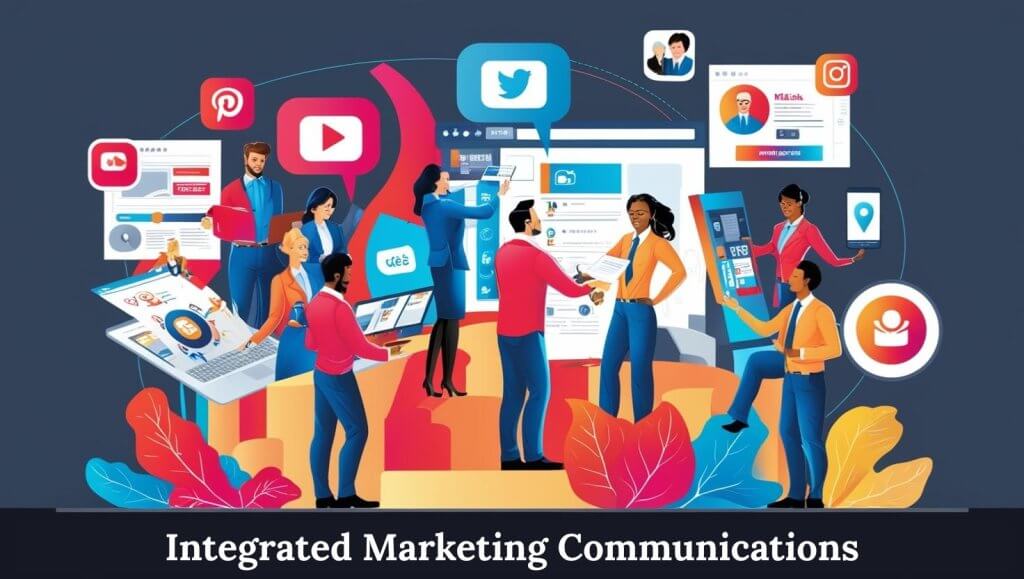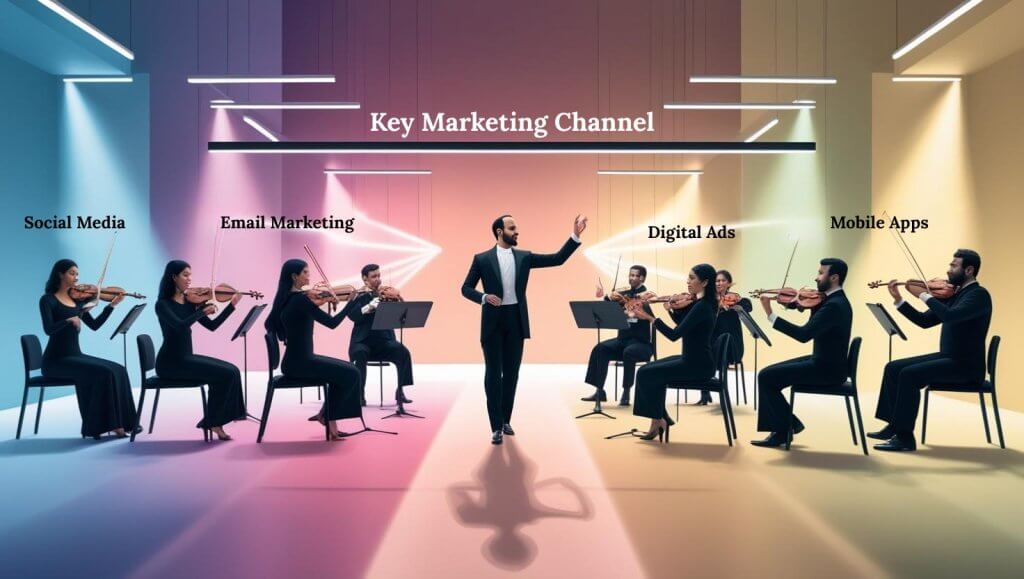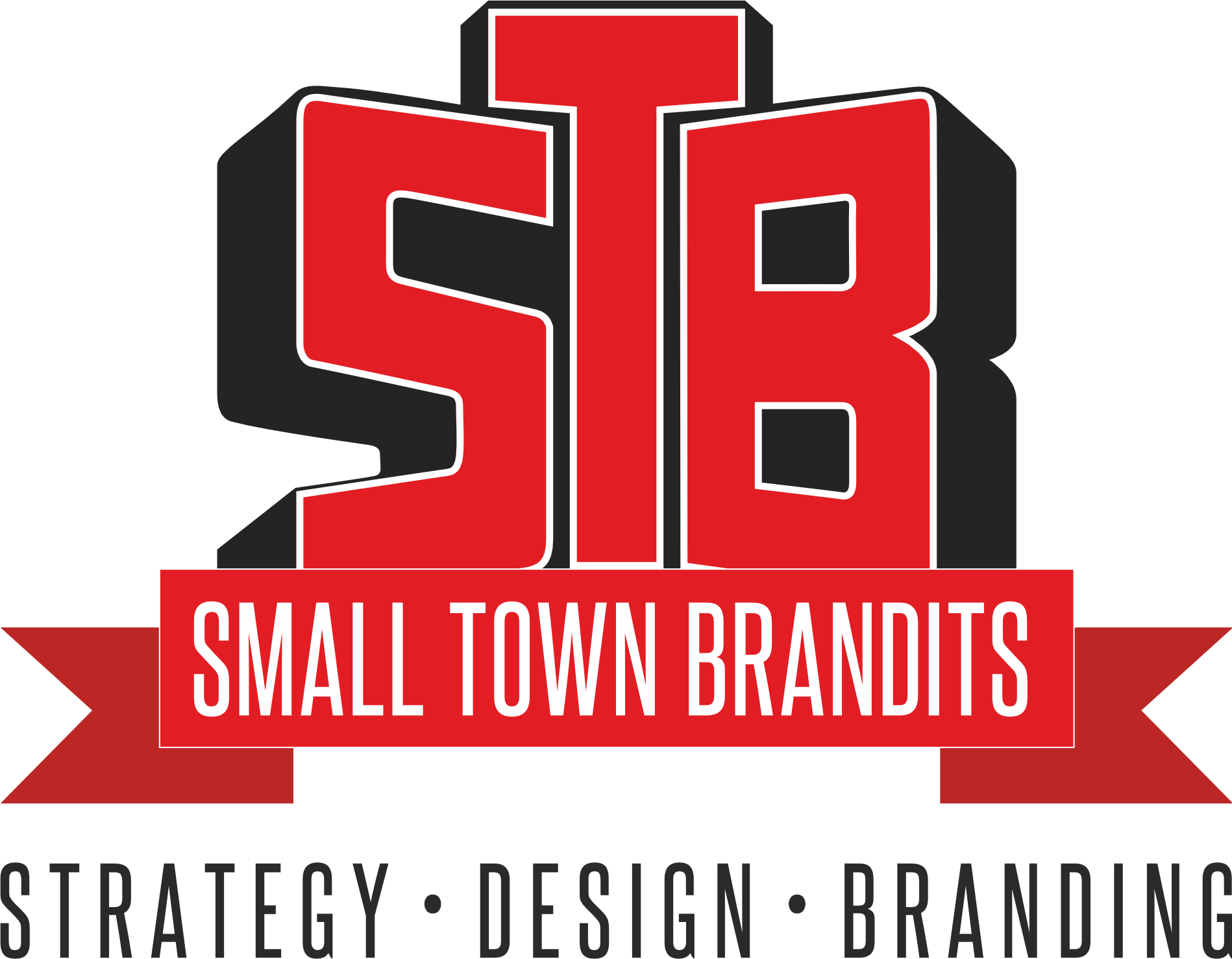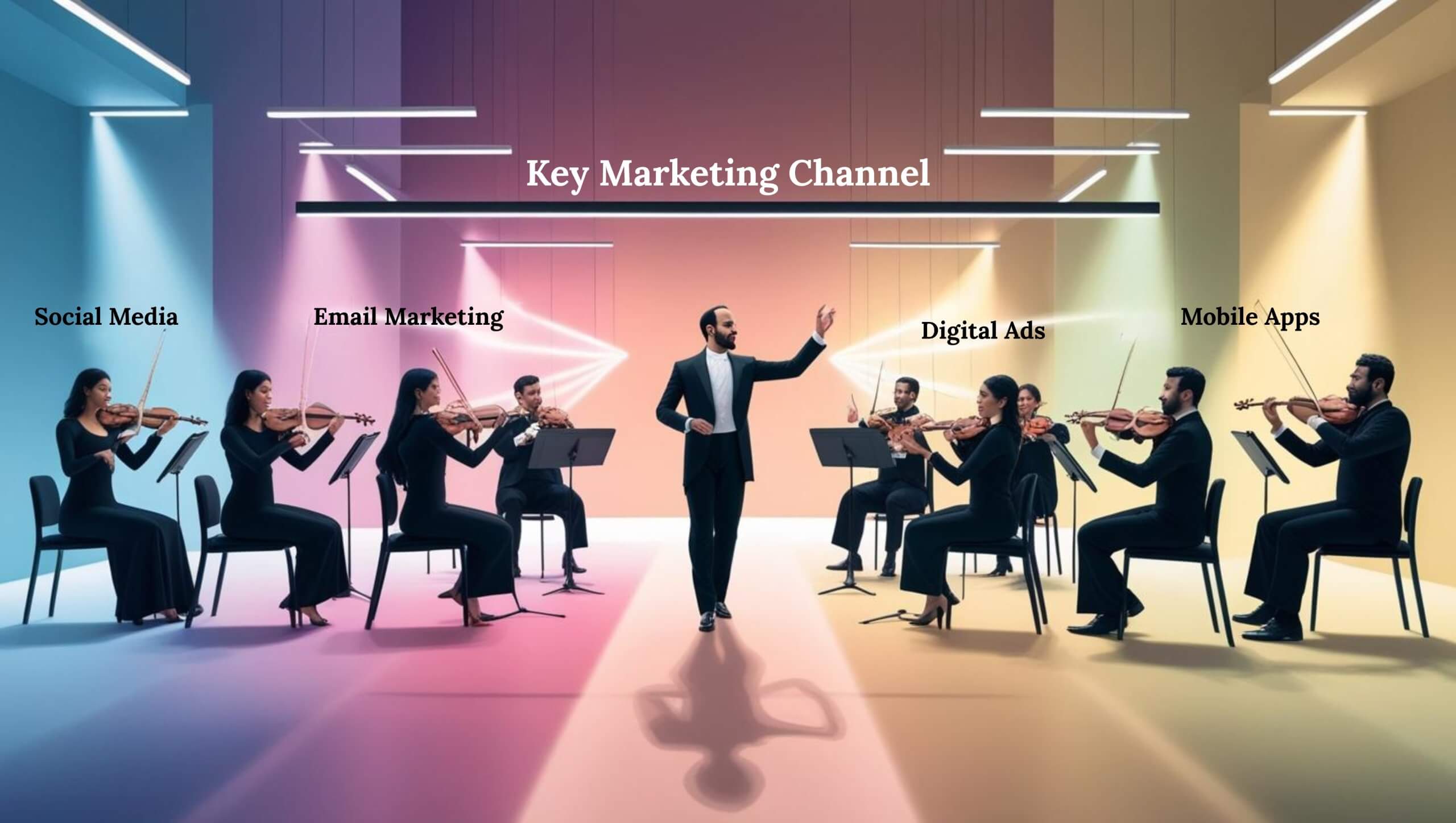
Impact of Integrated Marketing Communications on Modern Marketing Strategies
Integrated Marketing Communications (IMC) is more than just a buzzword. It is an important method to boost consumer engagement and help businesses succeed.
Businesses can keep their brand message the same at every point by making a clear marketing plan. This plan should connect all marketing channels. This cohesion reinforces brand identity, making it easier for consumers to connect with your message.
To truly harness the power of IMC, brands must develop integrated marketing campaigns that utilize both traditional advertising and innovative digital media strategies. This includes leveraging social media marketing platforms to foster genuine customer interactions and enhance customer relationship management. Consumers are more likely to connect with a brand when they see the same message in different marketing campaigns. This includes email newsletters, social media posts, and advertisements.
Moreover, effective customer service plays a crucial role in IMC. A positive interaction can elevate brand perception and encourage word-of-mouth promotion among the advertising public. Companies can create stronger emotional connections with their audience. They can do this by focusing on different parts of an integrated marketing communications approach. This approach helps drive more engagement, which is essential in today’s competitive market. Embracing IMC isn’t merely an option; it’s a strategic imperative for brands looking to thrive in an evolving marketplace.
Introduction: Understanding Integrated Marketing Communications (IMC)
Integrated Marketing Communications, or IMC, is a method that helps businesses share their message clearly across different channels. Think of IMC as a team of musicians playing in harmony.
Each instrument represents a different marketing strategy, such as social media, television ads, websites, and email campaigns. When these strategies work together, they create a comprehensive marketing strategy. This means that a brand’s messaging is clear and consistent. This helps customers understand who they are and what they offer.
Brand identity is crucial because it shapes how people see a brand. For example, if a company uses bright colors and catchy slogans, it portrays a fun and lively identity. When all parts of marketing align with this identity, it strengthens the brand’s overall image.
Imagine seeing the same logo, colors, and messages on social media, billboards, and product packaging. This repetition helps customers remember the brand better and builds trust. By using IMC, businesses can connect better with their audience. This leads to stronger relationships and more loyalty.
The Benefits of Implementing an Integrated Marketing Communications Strategy
Implementing an integrated marketing communications (IMC) strategy can significantly enhance a company’s effectiveness and reach. Imagine a lively concert where every instrument plays together in harmony; that’s how IMC works for a brand.
When businesses use various marketing strategies—like social media, email, and advertisements—together, they create a unified message. This means potential customers see the same brand message on different platforms. This helps strengthen a brand identity they can recognize and trust.
If a company uses a happy tone in its social media posts, it should use the same tone in other areas. This includes emails, advertisements, and customer service. Consistency in tone helps create a positive experience for customers. This consistency helps consumers understand what the brand stands for and builds stronger connections over time.
A comprehensive marketing strategy also allows businesses to reach various audiences more effectively. Companies can personally engage customers by tailoring messages to specific groups while maintaining that overall brand identity. Imagine seeing a brand’s logo and instantly recalling its values and promises; that’s the power of IMC.
Furthermore, using an integrated approach helps measure success more accurately. Companies can track how well each strategy works together, allowing them to improve. The result is better promotions and happier customers who feel more connected to the brand.
Companies that use an integrated marketing communications strategy often gain an edge in today’s fast-paced market. This helps their brand stand out in a crowded space. Overall, IMC is essential for any brand that wants to thrive and resonate deeply with its audience.
Key Elements of an Effective Integrated Marketing Communications Plan
An effective Integrated Marketing Communications (IMC) plan is like a well-coordinated show. It combines different marketing strategies to create a strong message for a brand.

The first key element is a clear and consistent brand identity. Every message should have the same central message and values of the brand. This includes ads, social media posts, and emails.
For example, if a company says it is friendly and fun, all its messages should sound cheerful. This helps to strengthen that image.
Another critical aspect of a comprehensive marketing strategy is audience understanding. Businesses need to know who their customers are and what appeals to them. By tailoring brand messaging to specific groups, companies can make their audience feel memorable and understood. This personal touch builds trust and loyalty, making customers more likely to choose that brand over others.
Additionally, using multiple marketing channels effectively is crucial. Whether through social media, websites, or traditional ads, every platform should echo the same brand messaging. This helps consumers recognize the brand no matter where they see it.
Finally, measuring the success of these strategies is vital. Companies should regularly assess how well their marketing tactics are working together. This allows them to make necessary adjustments and improve their overall approach.
An effective IMC plan combines a strong brand identity with a good audience understanding. It also includes consistent messaging across different marketing strategies.
Finally, it requires ongoing evaluation of success. When these elements work well together, a brand can connect strongly with its audience. This helps it stand out in a crowded market and build lasting customer relationships.
How to Create Your Own Integrated Marketing Communications Strategy
Creating your integrated marketing communications (IMC) strategy can be an exciting way to build your brand. First, you must consider your brand identity, which is how you want people to see your company. To begin, gather different marketing strategies that will work together, like social media, email campaigns, and advertisements.
For example, if your brand’s message is fun and friendly, show it in your social media posts, emails, and ads. This consistency in brand messaging helps customers feel a connection with your business.
Next, consider your target audience. A team tailors a comprehensive marketing strategy to meet the needs of different groups of people.
For instance, if you are trying to reach teens, you might focus more on social media platforms they use, like TikTok or Instagram. On the other hand, to get older adults, you might choose email or Facebook. This way, you engage everyone interested in your products while keeping your overall brand messaging the same.
Additionally, remember to measure the success of your strategies. Monitor the platforms attracting the most customers and identify which messages resonate most effectively. This data will help you improve your efforts over time. You will make your brand stand out by constantly refining your approach.
In conclusion, a good marketing communications strategy is vital for promoting your business. It helps you connect with your audience and makes your brand memorable. With a clear plan, a consistent message, and the right tools, watching your business grow can be gratifying!
Real-World Examples: Brands Excelling in Integrated Marketing Communications
Many brands today are great examples of integrated marketing communications (IMC). This means they use different marketing strategies to share a clear message. A great example is Nike.
Nike has built a strong marketing plan. They use social media, TV ads, and community events. This helps them connect with fans and athletes all over the world.
Nike’s brand message is about motivation and perseverance. This helps create a strong brand identity that people trust and admire.
Another notable example is Coca-Cola. Their “Share a Coke” campaign is a fantastic instance of integrated marketing communications.
Coca-Cola personalized its products by putting popular names on its bottles. This clever marketing strategy was eye-catching and involved social media, where people shared photos of their bottles. This approach enhanced Coca-Cola’s brand identity as a friendly and relatable company.
Apple is also a leader in integrated marketing communications. Its product launches generate massive excitement. Apple keeps its messaging consistent across all platforms through store displays, online ads, and official press releases. Because of this, people associate Apple with innovation and quality, strengthening its brand identity.
These brands show how powerful an integrated marketing communications strategy can be. By maintaining a clear message across different channels, they grab attention and create an emotional connection with their audience. This connection makes customers more likely to choose their products again. This shows that good marketing communications can lead to lasting success.
The Future of Integrated Marketing Communications: Trends and Innovations to Watch

The future of integrated marketing communications (IMC) is exciting. New trends and innovations are changing how brands connect with their audiences. One major trend is using
technology to create a more comprehensive marketing strategy.
Brands use artificial intelligence (AI) and data analytics to understand customer preferences better. This allows companies to tailor their marketing strategies in real time, ensuring their brand messaging resonates with the audience.
For example, brands can quickly change their campaigns if a trend appears on social media. This helps them connect better with customers.
Another significant trend is the rise of personalized marketing. Consumers are looking for brands that understand their needs and values. Integrated marketing communications will focus on building a relatable and authentic brand identity.
Brands can use customer data to personalize emails and social media ads. This makes consumers feel special and directly addressed. This boosts engagement and fosters loyalty, as customers appreciate brands that take the time to get to know them.
Sustainability and social responsibility are important topics today. They focus on how we can protect the environment and help communities.
Many companies are now trying to be more sustainable. They want to reduce waste and use resources wisely. Social responsibility means treating people fairly and supporting local needs. By working together, we can create a better future for everyone.
Important Parts of Branding
Branding is key for any business. It helps create a strong identity. Here are some important parts of branding:
1. Brand Name: This is the name of your business. It should be easy to remember and say.
2. Logo: A logo is a visual symbol of your brand. It should be unique and represent your business well.
3. Tagline: A tagline is a short phrase that sums up your brand. It should be catchy and meaningful.
4. Brand Colors: Colors can evoke feelings. Choose colors that match your brand’s personality and values.
5. Brand Voice: This is how your brand communicates. It should be consistent across all platforms.
6. Target Audience: Know who your customers are. Understanding them helps you tailor your branding efforts.
7. Brand Story: Share your brand’s story. This connects with customers on a personal level.
8. Consistency: Keep your branding consistent. This builds trust and recognition over time.
By focusing on these areas, you can build a strong brand that stands out. Companies that include these values in their marketing can improve their brand message.
Brands like Patagonia and Ben & Jerry‘s attract customers by promoting eco-friendly products and supporting social causes. This helps them build a community around shared values.
Technology, personalization, and a commitment to social responsibility will drive the future of integrated marketing communications. Brands that keep up with these trends can build stronger connections with their audience. This way, people will hear and understand their messages. This approach will solidify brand identity and loyalty in an ever-changing marketplace.
Conclusion: Unlock your brand’s fantastic potential with effective integrated marketing communications starting today!
In today’s fast-paced world, businesses need to stand out. Integrated marketing communications (IMC) can help unlock your brand’s great potential. IMC is all about combining different marketing strategies into one clear and strong message.
Envision your brand as a narrative. Every element of your marketing conveys this tale. This encompasses your website, social media platforms, emails, and advertisements. Each component serves as a chapter in a book.
This is where a comprehensive marketing strategy comes in. It guarantees all marketing initiatives function in unison.
For example, if your brand identity is eco-friendly, your messaging should reflect that across all platforms. This means you should use green colors in your logo. It includes sharing tips on sustainability through social media.
You should promote eco-friendly products in your ads. When your brand messaging aligns with your identity, customers easily recognize and trust your brand.
Using integrated marketing communications allows you to reach audiences more effectively. It helps eliminate confusion and ensures that your message is consistent everywhere.
Think of it as a team working together towards a common goal. Each team member has a different role, but they all contribute to the project’s success. This teamwork can increase awareness, improve customer engagement, and increase sales.
Stop delaying any further! Start using effective integrated marketing communications today to unlock your brand’s potential.
Focus on your brand message and identity. Use new marketing strategies.
This will help you create a strong presence in the market. This will help you build lasting relationships with your customers. Differentiate your brand with an integrated marketing communications Agency!






